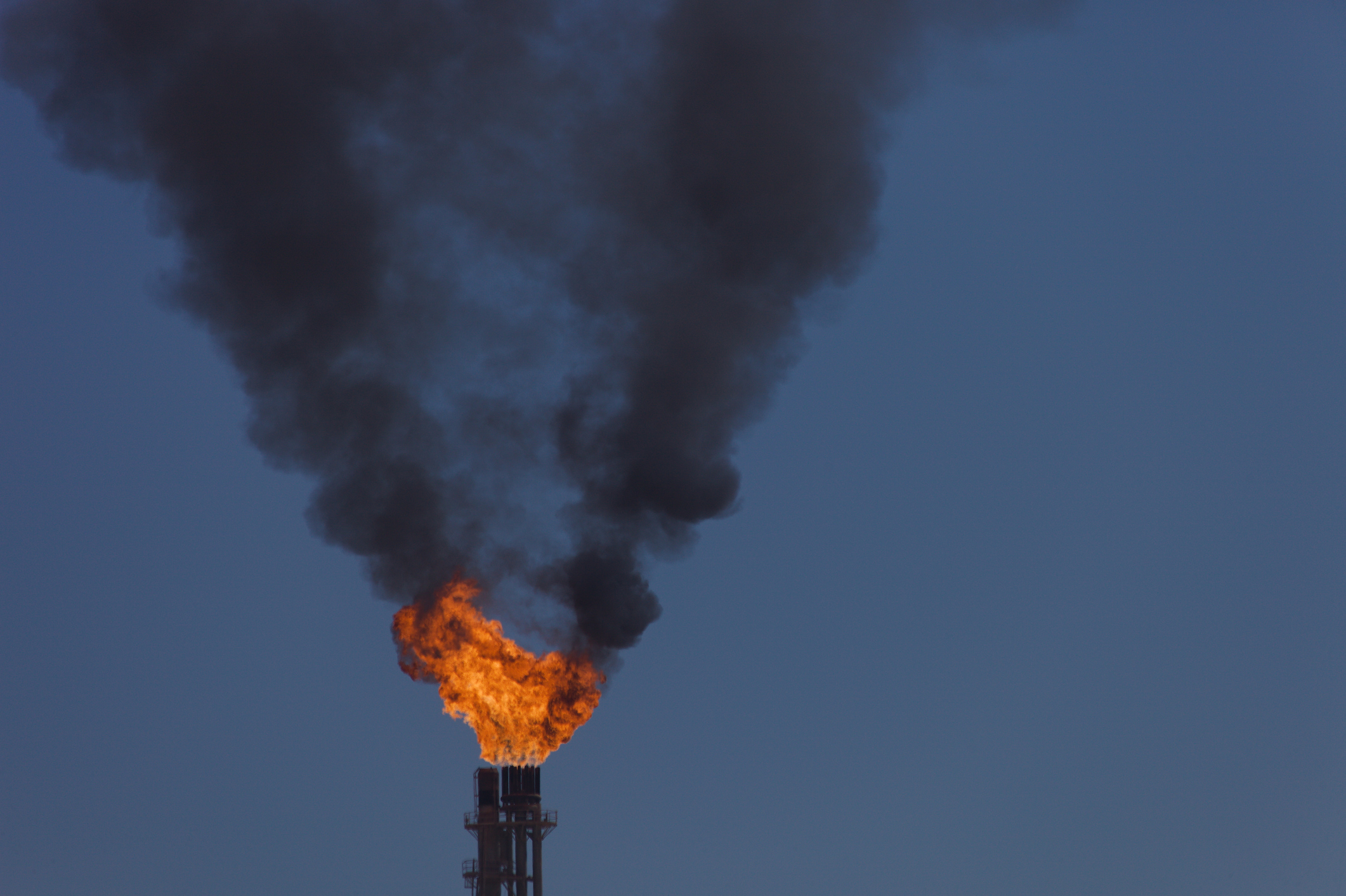Oil and Gas Flaring Linked to $7.4B in Health Damages.

Oil and Gas Flaring Linked to $7.4B in Health Damages
A new study also found that flaring and venting activities contributed to more than 700 premature deaths and 73,000 asthma exacerbations.
Oil and gas producers worldwide use venting and flaring to release or burn away excess natural gas in crude oil production. The practice contributes to air pollution in surrounding and downwind communities resulting in increased risk of hospitalizations, emergency room visits, worsening asthma and even premature death.
A new study by researchers at the School of Public Health, the University of North Carolina at Chapel Hill Institute for the Environment, and the Environmental Defense Fund found that pollution from oil and gas venting and flaring resulted in $7.4 billion in health damages, more than 700 premature deaths, and 73,000 asthma exacerbations among children annually. The researchers also found that emissions are underreported and controlling emissions is not only profitable for operators, but can significantly improve public health in surrounding communities.
Published in the journal GeoHealth, the results show that flaring and venting activities contribute an estimated $7.4 billion in health impacts and 710 premature deaths annually in the US. Of those deaths, 360 are attributable to fine particulate matter (PM2.5), ozone (O3) and nitrogen dioxide (NO2). Fine particulate matter is widely known to cause adverse health effects, but researchers say consequences of excess O3 and NO2 should not be overlooked.
“Our research shows that oil and gas flaring can have substantial health impacts, and that a large portion of these impacts come from NO2 and O3, two air pollutants which are commonly not considered in health impact assessments,” says study coauthor Jonathan Buonocore, assistant professor of environmental health.
Quantifying emissions for flaring and venting in the oil and gas industry has been difficult historically due to the intermittent nature of the practice and how those emissions are reported. The research team used satellite images from the Visible Infrared Imaging Radiometer Suite (VIIRS) instrument on the Suomi National Polar-orbiting Partnership (NPP) satellite to observe flaring and venting activities in combination with state and local reported data and found emissions that were up to 15 times higher for fine particulate matter, two times higher for sulfur dioxides and 22 percent higher for nitrogen oxides than what was reported in the US EPA’s National Emission Inventories (NEI). These emissions contribute to health-harming air pollution in oil and gas basins and surrounding areas and exceedances in ozone ambient air quality standards.
Texas, Pennsylvania and Colorado had the highest health burdens in this analysis, accounting for 45 percent of the total number of flaring and venting air pollution excess deaths.
“Being able to combine information from what states are reporting with satellite retrievals helped us quantify the emissions from this sector better than just relying on one source,” says study senior author Sarav Arunachalam, deputy director of the UNC Institute for the Environment. “Using a comprehensive multipollutant modeling framework as shown in our study is needed to assess the overall air quality impacts of this sector, instead of just focusing on one pollutant.”
Researchers also found the air quality health burdens of flaring and venting fall disproportionately on low-income, Hispanic and Native American communities. Of the total early deaths caused by flaring and venting, one in three occurred in low-income census tracts, 30 percent occurred in Hispanic/Latino census tracts, and 10 percent occurred in Native American census tracts. Of the 73,000 childhood asthma cases, 40 percent occurred in Hispanic/Latino census tracts.
Researchers are hopeful these new insights will have significant benefits on air quality and human health by reducing emissions from flaring and venting activities.
“This research provides more evidence of the problem of excessive venting and flaring in the oilfield,“ says study coauthor Hillary Hull, director of research and analytics at the Environmental Defense Fund. “This practice wreaks havoc on our climate, worsens quality of life and creates more health risks for people who live near this activity. State and national policies designed to put an end to this dangerous practice are sorely needed to protect the health and well-being of these communities.”
“The recent MethaneSAT mission launched to monitor oil and gas projects and specifically identify, in near real-time, large sources of methane that some satellite missions may miss will further assist to quantify emissions from this sector in an unprecedented manner, and to develop mitigation measures for addressing climate change in addition to solving air quality problems,” Arunachalam says.
At SPH, the study was coauthored by Erin Polka, doctoral student and research data analyst in the Department of Environmental Health.